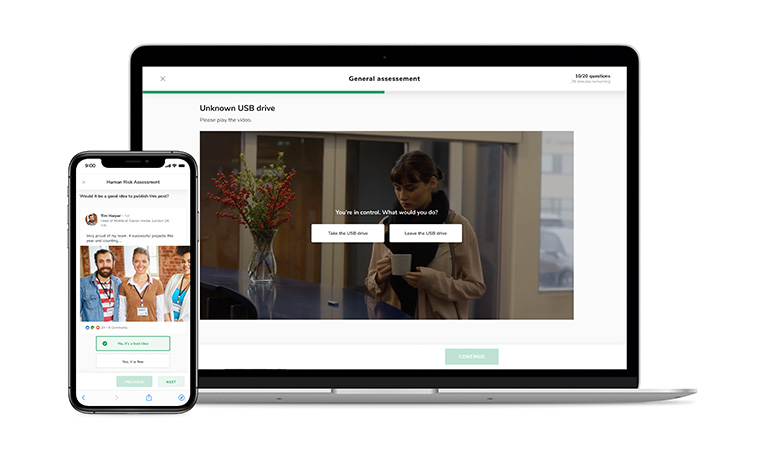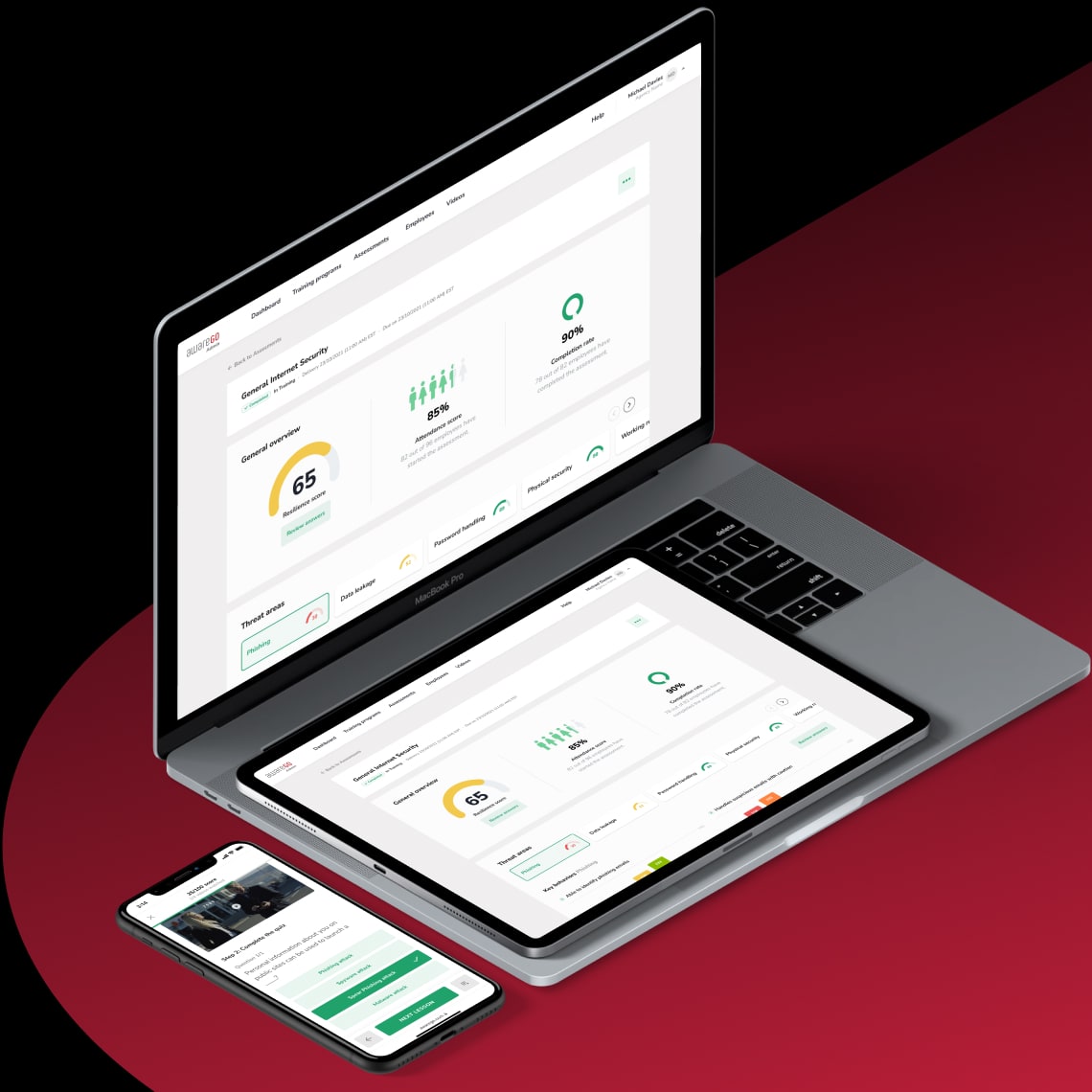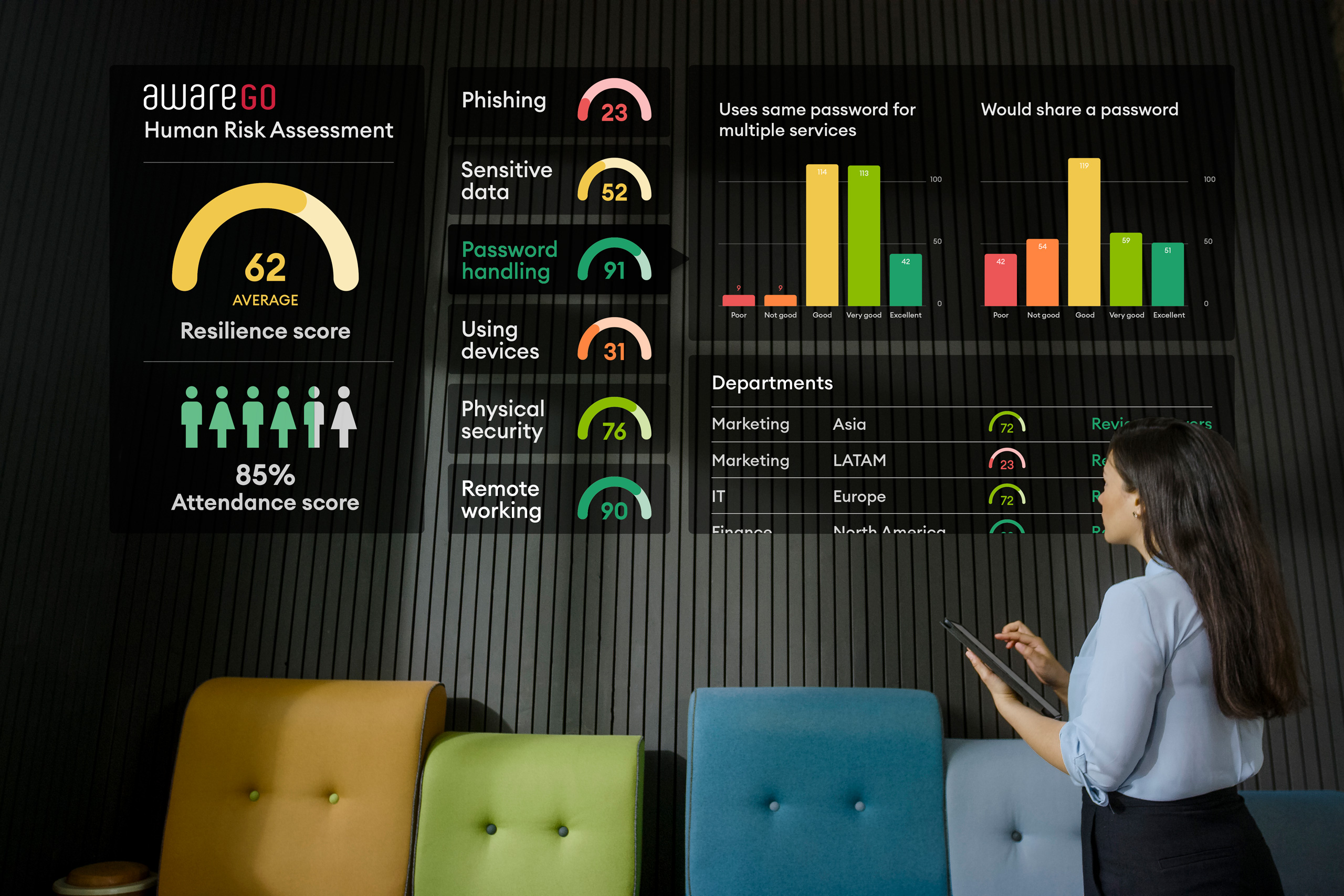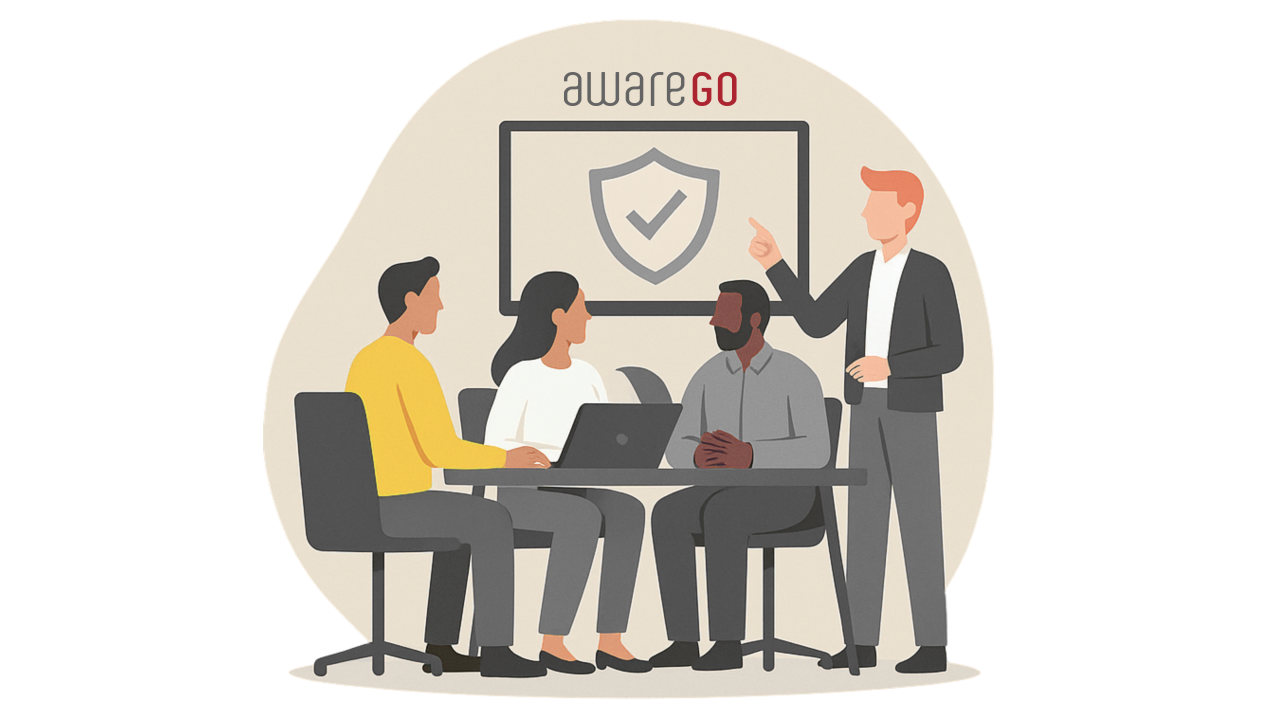Cyber attacks on colleges and universities are more common than you’d think. That’s why AwareGO has created a ready-made cybersecurity training for educational institutions. Cybersecurity training for employees and administrators is one of the ways to reduce the risk of cyber attacks.
AwareGO offers engaging and fun training content that employees love. We also offer complimentary cloud-based training software for those who need it. Furthermore, our cybersecurity training programs can easily be integrated with all modern communicative software that might be in place, such as SharePoint, Slack and Teams. You can even try our content and software out for free.

What’s Does The Cybersecurity Training Include?
For the cybersecurity training for educational institutions, we’ve selected 19 modules. These can be delivered over a period of time, and we recommend assigning 2-3 modules each week. Each module takes only 2-3 minutes to finish. We have emphasized data security, phishing, and ransomware in this program. These subjects seem to be the main pressure points for educational institutions. All of our other content is, of course, included in the subscription. That means that admins can continue training and go deeper into various subjects.
The designed cybersecurity training program for educational institutions includes cybersecurity awareness videos and additional reading content. Subjects include phishing and spear phishing, password handling, secure WiFi, data security, email links and attachments, and more. We add 1-2 modules to our portfolio every month. As we go along, relevant topics will be added to the cybersecurity training for educational institutions.
Online Education Is On The Rise
The education system has been gradually moving towards more online communication. This applies both between students and teachers but also in the overall administration, databases, teacher-parent communication, etc. Students now have easier access to their teachers. Teachers, in return, have better access to their students and all sorts of educational material and methods that weren’t available before. The online-education trend is soaring. Therefore it is time we looked at the cyber risks and cybersecurity measures available to educational institutions.

Higher Education Is Vulnerable
Universities and colleges must have an open network that their students and staff can access. This means that hackers have many opportunities to enter the system. Because so much data is at risk, these schools must take proactive measures to prevent attacks. A small data breach where the email addresses of students or faculty leak out could lead to a widespread phishing attack. This would be an attempt to gather more sensitive information through phishing emails. That way, hackers might reach further into the more protected realms of the institution’s computer system.
What Do Hackers Want?
The three most common commodities hackers target educational institutions are to get their hands on money, personally identifiable information, and/or valuable, confidential research. Ransomware attacks are one of the most common ways hackers make money. Prominent educational institutions are more likely to pay ransom for stolen data than to face damage to their reputation.
Furthermore, educational institutions are a goldmine of personally identifiable information. This is due to their large student populations, unblemished credit histories, and alumni and faculty data. Educational institutions collect a lot of data. Some even have passport information and health care data for their students.
Lastly, educational institutions, especially universities, are targeted for their valuable research. Cyber espionage attacks in educational institutions are on the rise. This is especially true for universities with medical centers and substantial research profiles.

Cybersecurity Training For Professors and Faculty
So what do we need to remember when we think about cybersecurity training for educational institutions? One of the first things that come to mind is the security of the administrative system. The second is the cybersecurity awareness of the faculty and office staff. Data protection laws have, and will continue to, come down hard on all organizations that willingly or accidentally mishandle the private information of their clients and staff or, in the case of educational institutions, students.
Keeping students’ personal information safe, such as academic scores, addresses, and other sensitive data, is of the utmost importance. Breaches can have severe consequences for educational institutions and the students in question. With AwareGO your can easily put a checkmark behind the mandatory compliance security awareness training.
For any educational institution to be able to call itself cyber secure, it will need to tackle risky behavior. Strong firewalls and safety measures should be in place. However, they will surely fail if the staff lets the hackers in the front door. Offering cybersecurity training to all staff members will minimize the risk of a breach and create a strong security culture on campus.
Choose The Right Cybersecurity Training Tools
Cybersecurity training for educational institutions also applies to teacher-student communication. Online tools are being used more frequently. This means that personal equipment is being used as well. The students’ personal equipment is less likely to have the same security standards as the school’s equipment. It is, therefore, an easier target for potential hackers.
We believe many educational institutions saw a rise in cyber attacks when taking education online during the Covid-19 pandemic. Had they all been prepared for a complete online curriculum and teachers working from home, many of these attempts might have been avoided. For instance, teachers may have used online tools and software less than optimal security-wise. Even though it looked alright at a fast glance and got the job done in a pinch. Colleges and universities must research the software and tools they intend to use. They also need to teach cyber security practices to their faculty before implementing them.

Everyone Needs To Be Prepared
By the end of school year 2020, it became apparent which higher education institutions were ready for the online revolution and which weren’t. The Covid-19 pandemic made it evident that we have an opportunity to offer online education. An opportunity that we should utilize for the greater good and increased inclusivity. With this come new challenges. Hackers were already likely to target the education sector. With more online education and communication, hackers will have even more ways to do their sinister work. That’s why cybersecurity training is critical for educational institutions.
Find out if our security awareness training, Human Risk Assessment and training platform work for you. Sign up for a free trial to get access.







